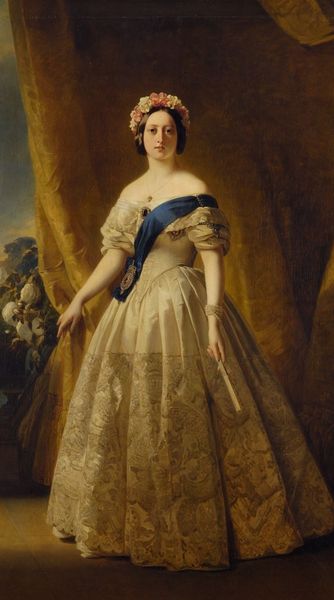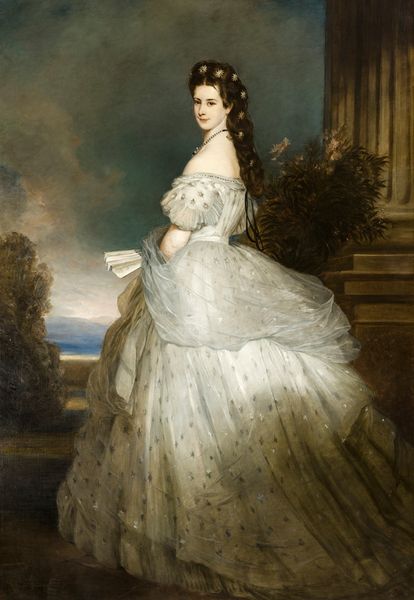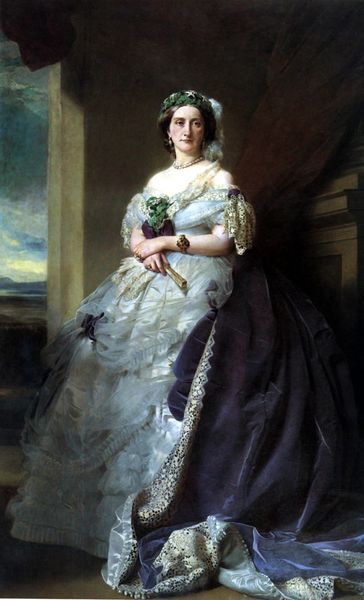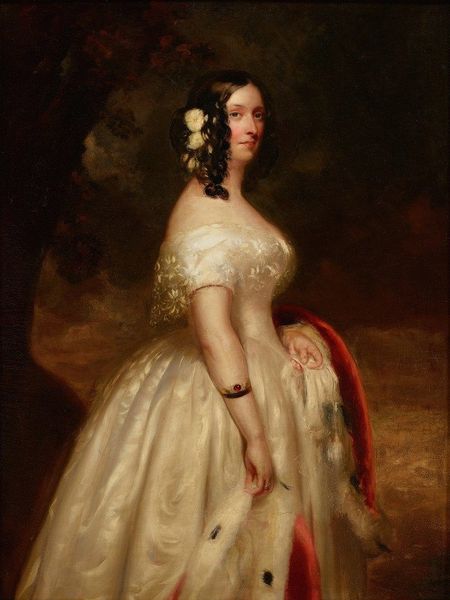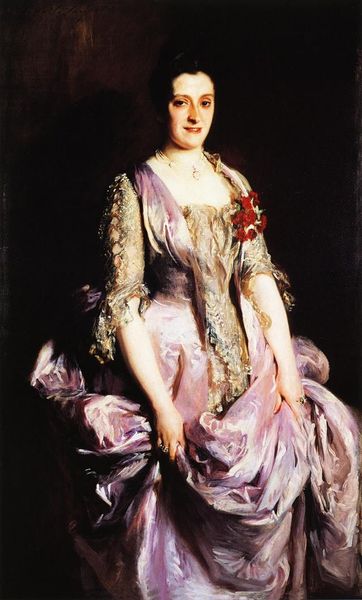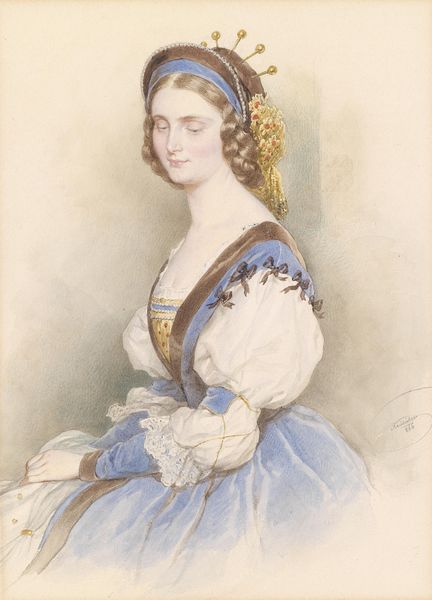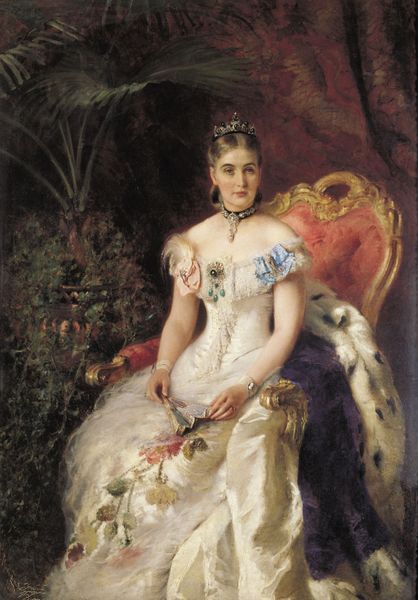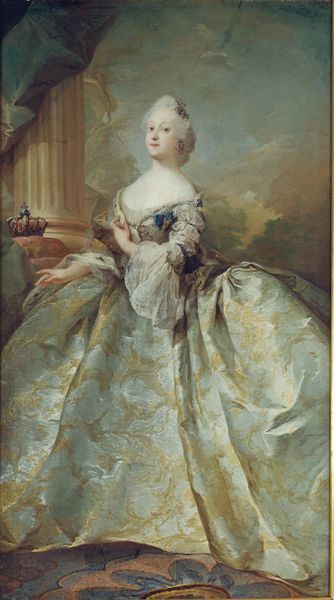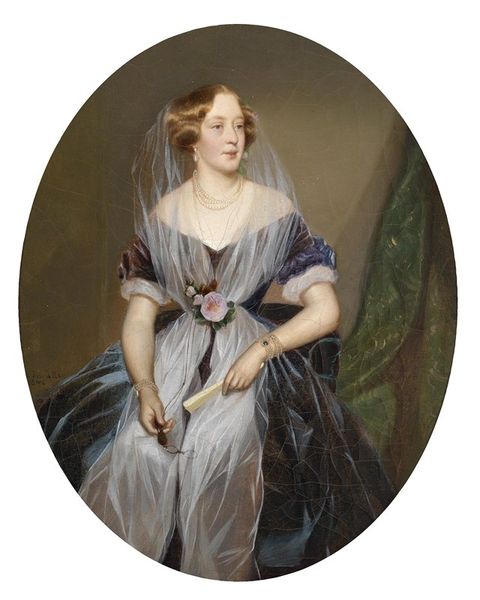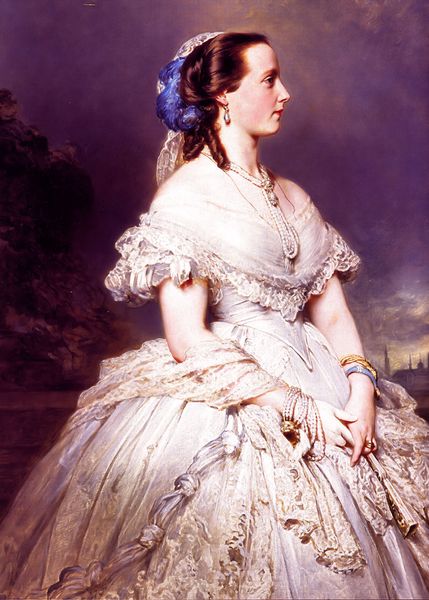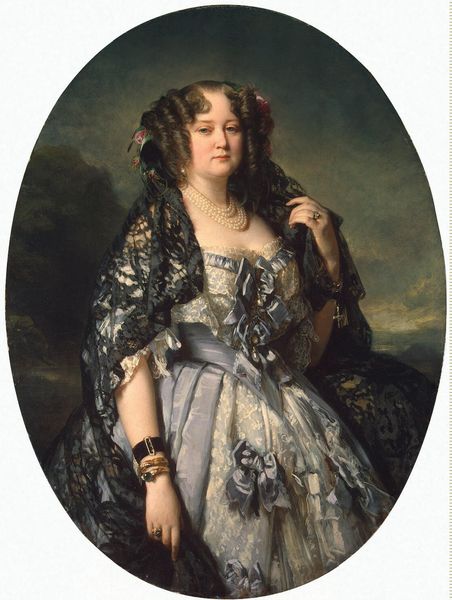
Copyright: Public Domain: Artvee
Franz Xaver Winterhalter painted this portrait of Empress Eugénie, likely in France during the Second Empire. The opulence on display in the portrait—the elaborate lace, the lush fabrics, the overall air of aristocratic refinement—speaks to the values of the imperial court. This was a period of immense social change, marked by rapid industrialization and growing class tensions. Winterhalter’s image, with its emphasis on luxury and tradition, suggests a desire to shore up the established order and project an image of stability. As historians, we can look to sources like fashion plates, social diaries, and political pamphlets to better understand the complex interplay of art, power, and society during the Second Empire. The portrait of Eugénie is not simply a likeness, it is a carefully constructed statement about the social role of the Empress and the cultural values of her time.
Comments
No comments
Be the first to comment and join the conversation on the ultimate creative platform.
